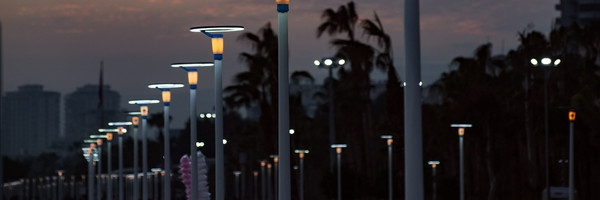Smart Lighting
Jump to navigation
Jump to search
| Utility | |||||||||||||||||||||
|---|---|---|---|---|---|---|---|---|---|---|---|---|---|---|---|---|---|---|---|---|---|

| |||||||||||||||||||||
| Sectors | Utility | ||||||||||||||||||||
| Contact | Wilfred Pinfold | ||||||||||||||||||||
| Topics | |||||||||||||||||||||
Activities
| |||||||||||||||||||||
- Authors
Smart lighting refers to the use of digital technology to control, automate, and optimize lighting systems.
Smart lighting typically involves the use of wireless communication, sensors, and software to control the brightness, color, and scheduling of lights. Smart lighting systems can be integrated with other smart home devices and can be controlled remotely using a smartphone or other device.
Examples of smart lighting include:
- Smart bulbs: These are LED or CFL bulbs that can be controlled wirelessly using a smartphone, tablet, or other device.
- Smart light switches: These are light switches that can be controlled wirelessly using a smartphone, tablet, or other device.
- Smart dimmer switches: These are dimmer switches that can be controlled wirelessly using a smartphone, tablet, or other device.
- Smart motion sensors: These are motion sensors that can automatically turn lights on and off based on occupancy.
- Smart lighting systems: These are lighting systems that can be controlled and automated using a central hub or app.
The benefits of smart lighting include:
- Increased energy efficiency: Smart lighting systems can help to reduce energy consumption by automatically turning lights off when rooms are not in use, or dimming lights when natural light is sufficient.
- Increased convenience: Smart lighting systems can be controlled remotely using a smartphone or other device, which can make it more convenient to control lighting in your home or office.
- Increased safety: Smart lighting systems can automatically turn lights on and off based on occupancy, which can help to increase safety by deterring intruders.
- Better ambiance: Smart lighting systems can be used to create different lighting scenes, which can be used to set the mood and enhance the ambiance of a room.
- Reduced costs: Smart lighting systems can help to reduce costs by reducing energy consumption and by reducing the need for expensive lighting infrastructure.




